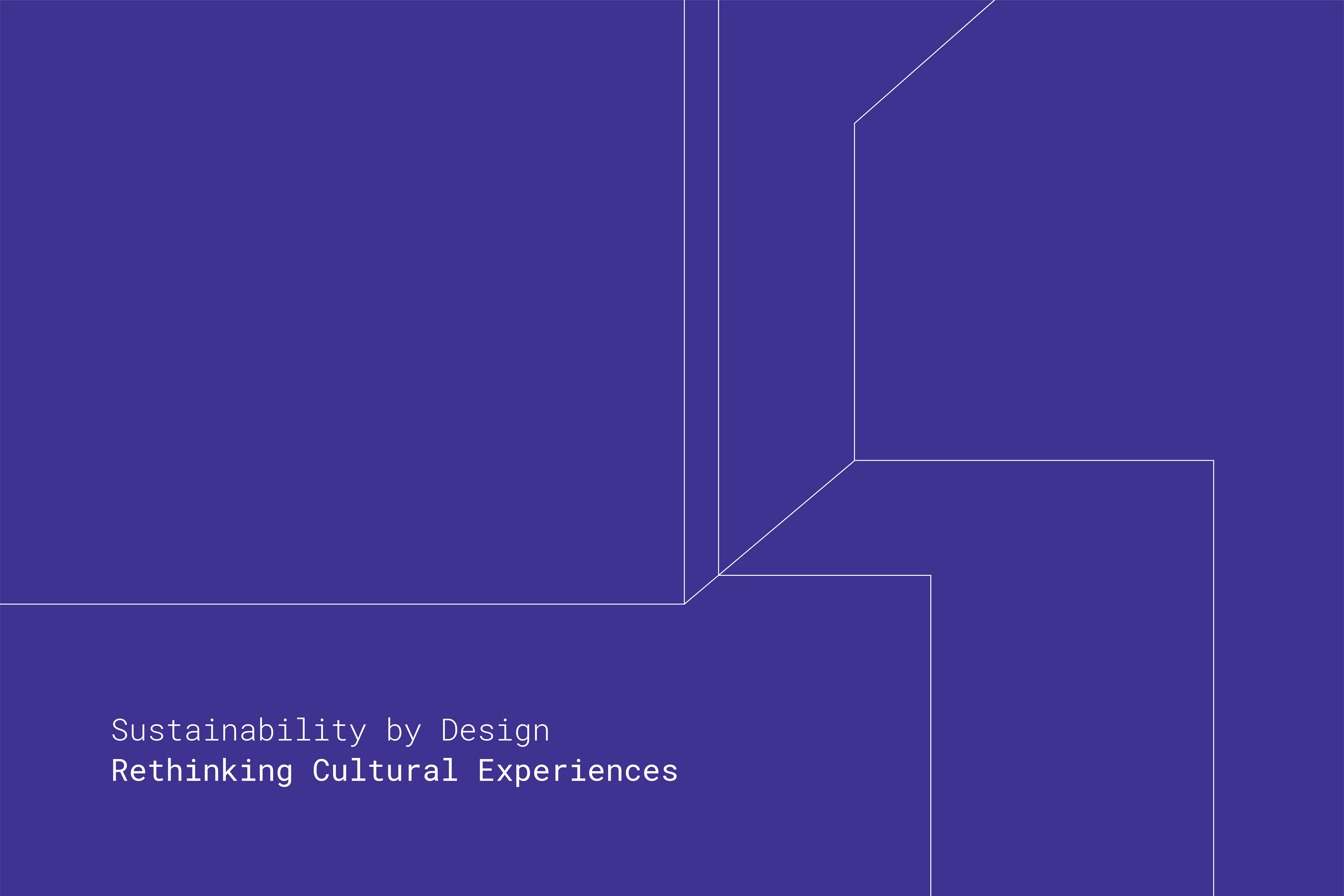Sustainability in museums
Museums and galleries, like many other types of organisations, are facing challenges and their visitors, peers, the arts and culture sector, and the government have certain expectations of them. Many common practices and procedures within museums and galleries are problematic, often contributing to climate change rather than helping mitigate it.
Like any other sector, the culture sector is multifaceted and requires the focused efforts of many unified collaborators to achieve a lasting sustainable solution. Designers are integral to this sector and are integrated within it at many different levels.
So, where do we, designers, fit in?
Where is the missing link? These organisations benefit from our skills when it comes to creating long-lasting, sustainable designs, but at what point did our purpose as problem-solvers get lost? Is sustainability too complex a requirement to integrate alongside other requests? Or are we, too, missing the correct guidance and understanding of how to achieve these goals collaboratively within the sector as a whole?
All the systems in which we function are interconnected and intricate; they are so complex that we sometimes wonder what difference one decision will make in this large and often overwhelming system.
How can designers help museums?
Cultural institutions, especially publicly-funded organisations, play a unique role in our society. As open and trusted civic organisations, these cultural institutions have more influence and impact on their visitors and the broader public than many others.
This influential position gives them the opportunity not just to try to be more sustainable but to become leaders, to be a force of positive change and help adapt and inform the behaviour of the wider public.
However, restrained by governance, state regulations and established systems—operationally and culturally—which haven't been reformed in decades, means sustainable change is hardly an easy task.
Regardless of these complexities, we still need to strive to become better citizens, designers and organisations with a lessened impact on our environment, economy and society. The goal should be to effect more incremental positive changes making it easier to solve the bigger problems. We must scrutinise and modify the systems in which we live and work and lead by example.
Although we cannot influence every aspect of a particular museum, we, as designers, are often embedded in projects from their initial conception. Whether it is a campaign, exhibition design, or a brand strategy we are working on, our idea and solution can have a massive influence on the future choices of the museum and the many systems supporting those decisions.
It is the role of the museum to create policies to ensure these solutions at every step. But policies take time. Until then, perhaps, as designers, we can put ourselves ahead of other systems and propose solutions even when we haven't been asked for them.
Many of these solutions can be offered by sharing our industry understanding and creating curiosity around the possibility of engaging in more sustainable solutions. Creating a checklist or ideal design and production requirements, which will change and evolve depending on the project, can be an opportunity for us to realise our own responsibility and change our impact to create a wave of solutions within this industry. If we make each other accountable for our designs, we can make sustainable design an industry standard, where design for the cultural sector can lead, and other sectors might follow.
Sample advice when designing/producing an exhibition.
These samples focus on physical exhibitions rather than communication/education relationships with the public.
Briefing stage
— Plan for circular use
— Request environmentally responsible suppliers
— Provide guidelines/policies
— Avoid toxic materials
— Use local suppliers
Materials
— Low impact materials
— Non-polluting materials
— Avoid mixed/bonded materials
— Use recycled/reused materials
— Recycle/reuse
— Locally sources materials
Production/Operations
— Choose environmentally responsible suppliers
— Use renewable energy
— Minimise waste/dispose responsibly
— Avoid toxic materials during installation
— Use less polluting transportation/minimise
— Use sustainable maintenance guidelines
— Promote transparent communication around sustainability
Deinstall
— Dismantle
— Separate
— Reduce waste
— Use environmental services/responsible waste management.
— Re-use/Re-purpose/Recycle
— Segregate/Compost
— Tour exhibitions (reuse)
These examples are to help begin the discussion about your own project and are primarily focused on environmental sustainability in an exhibition design scenario. Every project will allow for original opportunities and resourceful, sustainable solutions, whether environmental, social, or economic. Most designers will be conscious of various decisions that can lead to more sustainable designs.
As designers, we have considerable input into planning, strategy, specs, production, materials, contractors, and many systems surrounding these, so it is crucial that we use this power to make more informed and sustainable decisions.
---
About the Writer
Ruža Leko is a co-founder of the design agency studiosuss.ie and works primarily as a designer in the print and exhibition industry. Ruža is interested in sustainability, permaculture and education.
